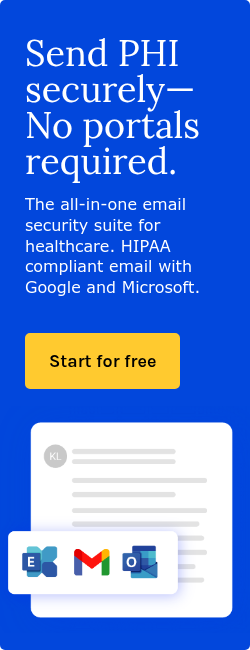
According to a bulletin published in 1944, “On July 1 the President approved the Public Health Service Act (Public Law No. 410), to consolidate and revise the laws relating to the Public Health Service. While the act makes a number of changes in the law, its basic purpose is to bring together into a single and consistent enactment virtually all of the statutes relating to the Service—a body of law which had accumulated over a century and a half, with little system or consistency, with many duplications and a few important gaps, and with an abundance of ambiguity.”
The backstory
ScienceDirect in Public Health Service Act states, “The PHS Act was first promulgated in 1944 to prevent the introduction, transmission and spread of communicable diseases from foreign countries into the United States but has since been amended to address the requirements for biological product manufacturing and approval.”
The Indiana University Bloomington published an article on a A brief history of the Public Health Service which explained that The Public Health Service Act (PHSA) has its roots in the 1798 "Act for the Relief of Sick and Disabled Seamen," which established the Marine Hospital Service to provide healthcare for merchant sailors. Over time, the service evolved, adopting a military-style structure under Surgeon General John Maynard Woodworth in 1870, who introduced uniforms, examinations, and a career system for medical officers. The service expanded its role in quarantine enforcement, disease prevention, and medical research, eventually becoming the Public Health Service (PHS) in 1912. During World War II, PHS officers served with the U.S. Coast Guard, and in 1944, the Public Health Service Act was passed, consolidating and broadening the service’s authority. This landmark law expanded the commissioned corps to include nurses, scientists, and other health professionals, laying the foundation for modern federal public health efforts. Today, the PHSA continues to guide U.S. public health policy, funding research, healthcare services, and emergency preparedness initiatives.
Major amendments
The PHSA has been amended numerous times to address emerging public health challenges:
- The Health Maintenance Organization Act of 1973
- The National Childhood Vaccine Injury Act
- The Ryan White CARE Act for HIV/AIDS services
- The Public Health Security and Bioterrorism Preparedness and Response Act
- Portions of the Affordable Care Act (2010)
How does the PHSA impact healthcare organizations?
Regulatory oversight
The PHSA empowers federal agencies to create and enforce regulations that healthcare organizations must follow:
- FDA regulations governing drugs, devices, and biologics
- CDC guidelines for infection control and disease reporting
- Substance Abuse and Mental Health Services Administration (SAMHSA) requirements for substance use disorder programs
- Health Resources and Services Administration (HRSA) standards for federally qualified health centers
Quality and safety standards
The PHSA establishes frameworks for quality improvement and patient safety:
- National quality strategy development
- Patient safety organizations
- Healthcare-associated infection reduction initiatives
- Quality measure development and reporting
Public health reporting requirements
- Notifiable disease reporting to state and local health departments
- Immunization registries participation
- Adverse event reporting for medications and devices
- Public health emergency data submission
Non-discrimination requirements
Section 1557 of the Affordable Care Act, which amended the PHSA, prohibits discrimination on the basis of race, color, national origin, sex, age, or disability in healthcare programs and activities, creating significant compliance obligations.
How do the PHSA and HIPAA intersect?
Public health activities exception
HIPAA's public health activities exception, which permits disclosures of protected health information without patient authorization when required by laws authorized under the PHSA:
- Disease reporting to public health authorities
- Reporting of adverse events to FDA-regulated products
- Workplace medical surveillance
- Reporting of child abuse or neglect
- Public health investigations and interventions
Health information exchange
Both laws contain provisions that influence how health information is exchanged:
- HIPAA establishes standards for electronic healthcare transactions
- The PHSA (particularly as amended by the HITECH Act) promotes health information technology adoption and interoperability
Research provisions
The research provisions in both laws:
- Section 301 of the PHSA establishes research programs and funding mechanisms
- 45 CFR § 164.512(i) provides conditions under which PHI can be used or disclosed for research without patient authorization
Emergency response
During public health emergencies:
- The PHSA provides authority for emergency response activities
- HIPAA includes provisions for privacy requirements during declared emergencies
The PHSA and the protection of individual data
Several PHSA provisions address privacy concerns:
- 42 U.S.C. § 242m(d) protects the privacy of individuals and entities who are the subject of research and statistical activities
- 42 CFR Part 2 (authorized under the PHSA) provides heightened privacy protections for substance use disorder treatment records
- The PHSA authorizes certain certificates of confidentiality for sensitive research
FAQs
How does the PHSA regulate healthcare organizations?
It grants federal agencies authority to enforce regulations on drug safety, infection control, substance use treatment, and quality improvement.
How does the PHSA influence health information technology?
Amendments such as the HITECH Act promote the adoption of electronic health records and interoperability.
Does the PHSA play a role in vaccine programs?
Yes, it authorizes immunization programs, vaccine injury compensation, and national vaccine safety monitoring efforts.
Subscribe to Paubox Weekly
Every Friday we'll bring you the most important news from Paubox. Our aim is to make you smarter, faster.




